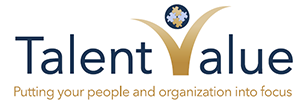What is Learning?
Learning is acquiring, modifying and reinforcing new and existing knowledge, behaviors, skills, values or preferences. A learning curve does not happen all at once, but builds upon and is shaped by what we already know. To that end, learning may be viewed as a process, rather than a collection of factual and procedural knowledge. Learning produces changes and the changes produced are relatively permanent.
Why is this important to know?
We want the time and money we spend on learning to “stick” and remain consistent from week to week, from month to month and from year to year. It costs a lot to train people to do the job well. The cost of turnover is very high. Partly because it cost money to replace the employee who left through our hiring and on-boarding processes, but also because the knowledge that employee had leaves with them. You must start all over again to get the new person up to speed and achieve the quality that is required. That costs real dollars and cents out of your pocket.
So how I do I get someone to learn what they need to learn?
The first step is to establish the standards for each task and behavior. We all want quality in what we do. Quality can be defined as adherence to standards. Without standards you cannot have quality because there will be no method of measuring or identifying success. This can happen in many ways. Our learning as an adult may occur as part of formal education and training, personal development, coaching, schooling, or on-the-job instruction.
You can try to teach someone what they need to know, but they have to personally decide to learn and make it a part of the way they go about their daily tasks. It has to become a natural part of their practices. “That’s the way we do it around here!”
The acquisition of that routine requires something called Active Learning. Active learning occurs when a person takes control of their learning experience. Since understanding information is the key aspect of learning, it is important for learners to recognize what they understand and what they do not. By doing so, they can monitor their own mastery of subjects. In addition, learners have more incentive to learn when they have control over not only how they learn but also what they learn.
Our Learning Checklists (LCL) are designed to encourage this process. Every human learns 3 ways: (1) by reading it; (2) by hearing it; and (3) by doing it and repeating the process until it becomes a natural activity. It is an integrated part of the Job Description process and linked to Performance Development Planning and regular evaluation and goal setting. This is direct hands-on learning otherwise known as competency training for both tasks and behaviors.
There are other ways to learn, of course, besides on-the-job training with the LCL. Web based training sessions, seminars, workshops, college courses, institutes, books, articles, presentations and lectures by speakers, and conversations with experts in various subjects are all ways to acquire knowledge from others.
Experience is the best teacher. Real learning, active learning, comes from doing what you have to do until you get it right. Wisdom comes from understanding how to apply that knowledge acquired to one or more situations at the right time and in the right proportions or quantities. What we eventually want is to have the wisdom to know what has to be done. In summary (1) learn the knowledge; and (2) apply the knowledge. These are the two kinds of information that will be available through TalentValue. Both are equally important to know.
TalentValue provides the information that enables business owners and executives to make better decisions regarding their people issues.
How to get the knowledge you want to acquire
- Every step in our TalentValue system has a training manual on how to use our TalentValue systems. There are clear instructions with screen shots to show you exactly how to properly execute each step. These tools are designed to get you the right information in a timely manner. If you are confused or not sure how to proceed, please reach out at support@TalentValue.com .
- It is always good to begin at the beginning with our FAST START program. This outlines the steps to take to build your HR systems so they work appropriately in your organization. It is not necessary to create a monster bureaucracy to implement what is available to you. It is necessary to invest some time to understand what you have to do, establish a plan for how to do it, so you can make it work for you. Give us the opportunity to help you do it right for you.
Contact us to learn more about how TalentValue can help you evaluate your current training and learning programs and show you how to get your people motivated to learn and grow.
